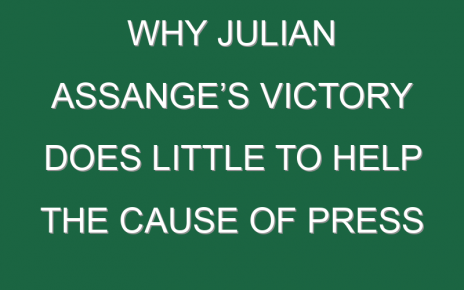Vaccinating the global population against COVID-19 is one of the most immense distribution and logistical challenges humanity has ever faced. Some are hoping that artificial intelligence and blockchain technology can help with the task.
“This is about trying to solve the biggest data puzzle of our lifetime,” Jason Kelley, who heads blockchain services for IBM.
So far, solving, that puzzle has proved painstakingly slow. Only about 4 million people in the U.S.—just over 1% of the population—have received at least one dose of a COVID-19 vaccine. Worldwide, the progress is even more sluggish, with some countries yet to vaccinate any of their citizens. Even Israel, which has vaccinated the largest portion of its population so far, has given first jabs to just 12%.
The distribution of the COVID vaccine involves at least four separate but related problems: how much vaccine to ship where and when. That’s demand forecasting. Then that distribution network needs to be monitored for bottlenecks. That’s supply chain management. Furthermore, the pharmaceuticals companies making the vaccine, those administering it, and people receiving it all need assurance that the batch of vaccine is legitimate and made to the correct standard, and that the right dose is administered. That’s quality assurance. Finally, those receiving the vaccine need to be monitored for any unusual side effects. That’s adverse event surveillance.
Governments and companies are hoping to use new technologies in each of these steps.
Low temps and high prices
Accurately forecasting demand for the vaccine is particularly important for some of the first vaccines that have been approved for use in the U.S. and Europe because of the ultralow temperatures at which they must be kept and their relatively high prices. Governments can’t afford to let doses go to waste.
IBM is among the companies trying to help U.S. hospitals and state governments manage the limited supplies of vaccines available so far, according to Tim Paydos, the company’s global general manager for government industry. This involves using IBM’s Watson Health Analytics software to marry zipcode-level data on demographics and health status with information on people’s attitudes towards vaccinations to try to forecast demand and also ensure vaccines are distributed equitably, he says.
In the developing world, the challenge of demand forecasting and supply chain management is even more acute. Macro-eyes is an A.I. company based in Boston. It was founded by Ben Fels, who had once used machine learning to scour financial market data for minute trading signals. Today, he uses similar technology to look for indicators that will allow Macro-eyes to forecast demand for medicines and other health care offerings. On this front, the company has worked with Stanford University’s health system in the U.S., but it has completed several projects in Africa, including one to bolster childhood immunizations in Tanzania.
In its African projects, the company uses a wide range of data—including satellite imagery and maps, the number of mobile phone users in a certain area, social media posts and official government data—to try to predict how many people will show up for health care at any one place. Each data set on its own may be of marginal value. But by combining lots of data sets, Macro-eyes is able to make accurate predictions.
Marco-eyes’s system was able to improve forecasts for childhood vaccination demand in Tanzania by 96% and reduce wasted dosages to just 2.42 vials per 100 shipped. Now Macro-eyes is hoping to help governments around the world—including possibly some U.S. states—to do something similar with COVID-19 vaccines.
Ensuring efficiency is even more important with these vaccines, Fels says, since demand far exceeds supply, making each dose precious. Some of the vaccines are also relatively expensive per dose, making waste costly. Concerns about cold storage will be an issue in many places, even with vaccines such as AstraZeneca’s that can be kept at normal refrigerator temperatures. “We can’t afford to throw away 30 doses because we sent them to wrong place,” Fels says. “But if we allocate the vaccine strictly according to population we are going to severely underallocate to some sites and severely over-allocate to others.”
Blockchain and machine learning
Once a distribution network is up and running, keeping tabs on how it is functioning and tracking doses as they move through the supply chain is another area where A.I. and technologies such as blockchain may play a role.
IBM markets “object-based” supply chain management software that can track the location of every vaccine vial in as near real-time as possible, and to match the vial to the people vaccinated with the doses contained in that vial. It had already used this software earlier in the pandemic to help track supplies of personal protective equipment, Paydos says.
Celonis, another software company that helps businesses build dashboards to track business processes in real-time, has also seen its software used to track PPE for health system customers, and is now hoping that it can be adopted to handle vaccines too.
Building on top of this software, machine learning can be used to predict potential distribution bottlenecks and to potentially suggest ways to work around them. Genpact, the U.S.-based technology and business process outsourcing firm, has developed software for its pharmaceutical industry customers that help them track batches of drugs as they move through a supply chain. The COVID-19 vaccines will be particularly challenging, says Eric Sandor, the head of Genpact’s Pharmacovigilance A.I. business, because different batches may be produced by different contract manufacturers at different facilities, resulting in variations among them, and there may be further issues around the storage of individual lots of vials from within each batch. Keeping track of exactly which lot and batch was used to vaccinate each individual may be critical to tracking any safety issues with the vaccine, Sandor says.
There’s another challenge too: most of these supply chain software packages were designed to be used within a single organization. But, with the COVID-19 vaccines, there is a need to track supplies through a chain that is controlled by many different parties—from drug manufacturers, courier companies, hospitals and pharmacies, and even various branches of government—which don’t all use the same software. What’s more, some of these companies may be competitors who are generally reluctant to share data, or they may be unable to share data easily due to regulatory, security and compliance concerns.
That’s where IBM’s Kelley thinks blockchain technology, the digital ledger system that underpins cryptocurrencies such as Bitcoin, can play a vital role. This kind of digital ledger could provide a trusted, secure and verifiable record of the chain of custody for every vial of vaccine that could be used by every organization involved in the process, he says. IBM is currently in discussions with several drug manufacturers about signing up for this blockchain-based solution in order to create “a minimally-viable ecosystem,” to launch it, he says.
Side effects
Once people have received inoculations, the vaccine makers and government health agencies will need to monitor these people for signs of unusual side effects or rare complications. While the vaccines have been tested on tens of thousands of people during clinical trials, there may be side effects or safety issues that only become apparent when millions receive injections. Many governments require doctors and pharmaceutical companies to file reports for any unusual symptoms patients experience after being given a drug. Even for medicines given to far smaller numbers of people, these rules can result in a large number of “adverse event” reports being submitted. The vast majority of these usually end up being false alarms, with the symptoms either unrelated to the drug in question or not an indication of any danger. But sometimes they do point to a critical safety issue that wasn’t picked up previously. Because the COVID-19 vaccine is being given to so many people, the volume of these reports is likely to be massive—far too many for humans to review fast enough to pick up any signs of a serious problem before it’s too late.
That’s why some governments are turning to A.I. to help. The British health regulator has contracted with Genpact to deploy machine learning software that can screen its official “yellow card” reports—which doctors and patients use to report unusual side effects that could be a cause for concern. The system Genpact built, which went live in December, takes in plain text and automatically codifies it, and searches for patterns that could be indicative of an emerging safety issue, flagging this to the regulator for further investigation, Sandor says.
Tiger Tyagarajan, Genpact’s chief executive officer, says the software has been trained on many different types of writing, so that it can understand both the medical terminology a doctor might use in reporting symptoms as well as the more colloquial expressions a member of the public might use. He says Genpact was only able to deploy this system quickly—it was up and running three months after Genpact received the contract—because the company had already built even more sophisticated versions of it for its pharmaceutical industry customers, particularly in the U.S. where the Food and Drug Administration requires stringent post-approval surveillance and reporting of any safety concerns with a medicine. In those cases, Genpact’s A.I. software doesn’t just look at a single government form, as it is doing in the U.K., it also scans medical journal articles and even social media posts for evidence of unusual symptoms that could be a cause for concern.
Some technologists have lamented that A.I. hasn’t been a big help during the pandemic. While some A.I. software helped sound early warnings that a worrisome new respiratory virus seemed to be circulating in Wuhan, China, the technology certainly didn’t help prevent the pandemic. And, it’s impact on epidemiological modeling and policymaking has been minimal. It’s had limited impact in the quest to find Covid-19 treatments and develop vaccines.
Some have quipped that A.I. would be ready to combat the next pandemic, but not this one. But, in helping to ensure that vaccines are distributed quickly and safely, the technology may yet prove its worth.
More must-read tech coverage from Fortune:
- A brief history of Bitcoin bubbles
- Commentary: Why the U.S. needs a national climate investment fund
- The biggest conspiracy theories of 2020 (and why they won’t die)
- Why Julian Assange’s victory does little to help the cause of press freedom
- Commentary: Marketers can’t predict what you’ll buy—even if they use A.I.




